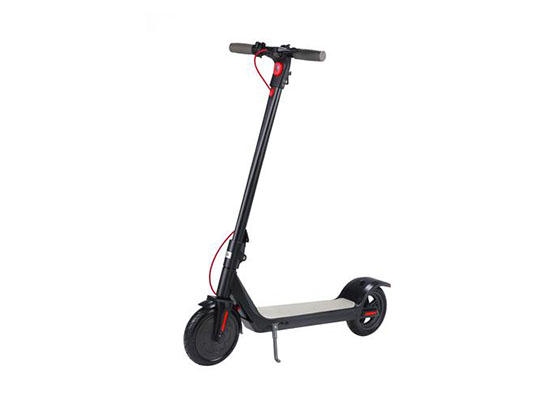The Tesla Model 3 has become a prominent player in the electric vehicle market, captivating consumers with its sleek design, impressive performance, and advanced technology. As car enthusiasts discuss its classification, one question frequently arises: Is the Tesla Model 3 a hatchback? To answer this question, let’s delve into the characteristics of hatchbacks, examine the design of the Tesla Model 3, compare it to traditional hatchbacks, and explore both sides of the argument.
Understanding Hatchbacks:
Before diving into the specifics of the Tesla Model 3, it’s important to understand what defines a hatchback. Hatchbacks are compact cars characterized by their rear liftgate, which combines the rear window and trunk lid into a single unit. This design allows for a larger cargo area, making hatchbacks versatile and practical for daily use. Additionally, hatchbacks often prioritize efficiency and maneuverability, making them popular choices among urban dwellers.
Examining the Tesla Model 3:
To determine whether the Tesla Model 3 qualifies as a hatchback, let’s take a closer look at its design. The Model 3 boasts a sleek and aerodynamic exterior, emphasizing clean lines and minimalism. However, it does not feature the traditional rear liftgate commonly associated with hatchbacks. Instead, the Tesla Model 3 has a separate trunk compartment accessible through a conventional trunk lid. This departure from the typical hatchback design raises doubts about its classification.
Comparing the Tesla Model 3 to Hatchbacks:
While the Tesla Model 3 lacks the rear liftgate, there are still several aspects that align it with hatchbacks. Firstly, its compact size and overall dimensions fall within the range of traditional hatchbacks. Additionally, the Model 3 offers a spacious cargo area, thanks to its split-folding rear seats. With the seats folded down, the Model 3 can accommodate large items, rivaling the cargo capacity of some hatchbacks.
Arguments for the Tesla Model 3 as a Hatchback:
Supporters of categorizing the Tesla Model 3 as a hatchback highlight the rear trunk design as a key factor. While it may not feature a conventional liftgate, the Tesla Model 3’s rear trunk provides a significant amount of cargo space. The wide opening and deep storage area offer practicality comparable to hatchbacks, allowing for easy loading and unloading of items.
Furthermore, the Tesla Model 3’s interior layout exemplifies the versatility often associated with hatchbacks. Its rear seats fold flat, expanding the cargo area and enabling the transportation of larger items. This flexibility enhances the Model 3’s utility, making it a suitable choice for individuals seeking a spacious electric vehicle.
Arguments against the Tesla Model 3 as a Hatchback:
Critics argue that the traditional definition of a hatchback revolves around the presence of a rear liftgate, a characteristic that the Tesla Model 3 lacks. In the strictest sense, hatchbacks have a unified rear window and trunk lid, providing a wide and accessible cargo space. By this definition, the Tesla Model 3’s separate trunk compartment separates it from the traditional hatchback category.
Additionally, some proponents argue that the Tesla Model 3 aligns more closely with a sedan or a fastback design. Sedans typically feature a separate trunk compartment with a fixed rear window, and fastbacks combine the sleekness of a sedan with a rear liftgate that spans the full width of the vehicle. These alternative classifications may be more appropriate for the Tesla Model 3, given its design elements and unique features.
FAQs:
Q1: What is the difference between a sedan and a hatchback?
A: Sedans typically have a separate trunk compartment and a fixed rear window, while hatchbacks have a rear liftgate that combines the rear window and trunk lid, providing a larger cargo area. Sedans often prioritize a sleek and elegant design, while hatchbacks prioritize versatility and practicality.
Q2: Does the Tesla Model 3 have a traditional hatchback design?
A: No, the Tesla Model 3 does not have a traditional hatchback design. It features a separate trunk compartment with a conventional trunk lid, rather than a rear liftgate. However, it offers a spacious cargo area and folding rear seats, which enhance its practicality.
Q3: Can the Tesla Model 3 accommodate large items?
A: Yes, the Tesla Model 3 can accommodate large items. With the rear seats folded down, it offers an expanded cargo area, allowing for the transportation of larger items. While it may not have a traditional hatchback design, the Model 3’s practicality and versatility are comparable to some hatchback models.
Q4: Why is there debate about whether the Tesla Model 3 is a hatchback?
A: The debate stems from the absence of a rear liftgate in the Tesla Model 3, which is a defining characteristic of hatchbacks. Some argue that its separate trunk compartment aligns it more closely with sedans or fastbacks. However, others emphasize its spacious cargo area and practicality, which are features typically associated with hatchbacks.
Q5: How does the Tesla Model 3 compare to traditional hatchbacks?
A: While the Tesla Model 3 may not have a conventional hatchback design, it shares similarities with traditional hatchbacks in terms of its compact size, cargo capacity, and versatility. The Model 3’s rear trunk provides a significant amount of storage space, and its folding rear seats further enhance its practicality, comparable to hatchback models.
Q6: Can the classification of the Tesla Model 3 as a hatchback change over time?
A: Yes, classifications in the automotive industry can evolve over time as new designs and technologies emerge. The Tesla Model 3’s unique features and design elements challenge traditional definitions, which may lead to shifts in how it is categorized. As the industry progresses, new body style classifications may be introduced to accommodate innovative designs like the Model 3.
Q7: Does the debate about the Tesla Model 3 being a hatchback affect its performance or features?
A: The debate about whether the Tesla Model 3 is a hatchback or not does not directly impact its performance or features. The Model 3 remains a technologically advanced electric vehicle with impressive performance, cutting-edge features, and a commitment to sustainability, regardless of its classification.
Conclusion:
The question of whether the Tesla Model 3 is a hatchback remains open to interpretation. While it deviates from the conventional hatchback design by lacking a rear liftgate, the Tesla Model 3 showcases elements that align it with hatchbacks, such as its compact size, spacious cargo area, and practicality. The rear trunk of the Tesla Model 3 offers ample storage space, and the folding rear seats further enhance its versatility.
However, it’s important to acknowledge the arguments against categorizing the Tesla Model 3 as a hatchback. The absence of a unified rear window and trunk lid, which is a defining characteristic of hatchbacks, challenges its classification. Some enthusiasts argue that the Tesla Model 3’s design elements align it more closely with sedans or fastbacks.
Ultimately, whether the Tesla Model 3 is considered a hatchback or not may depend on personal interpretation and perspective. It’s crucial to remember that car classifications can be fluid and subject to debate, especially as new designs and technologies emerge.
Regardless of its classification, the Tesla Model 3 remains an innovative electric vehicle with exceptional performance, cutting-edge features, and a commitment to sustainability. Its design prioritizes efficiency, range, and overall driving experience, making it a popular choice among eco-conscious consumers.




